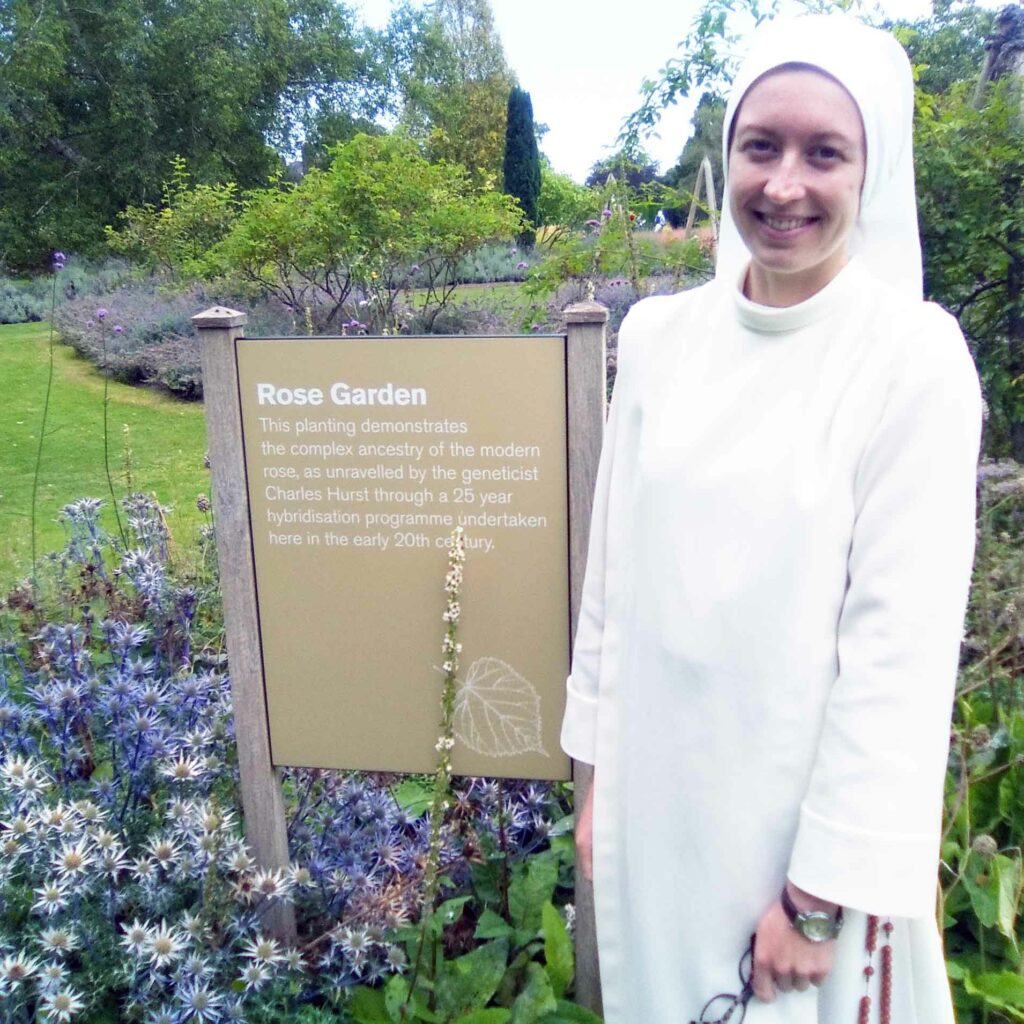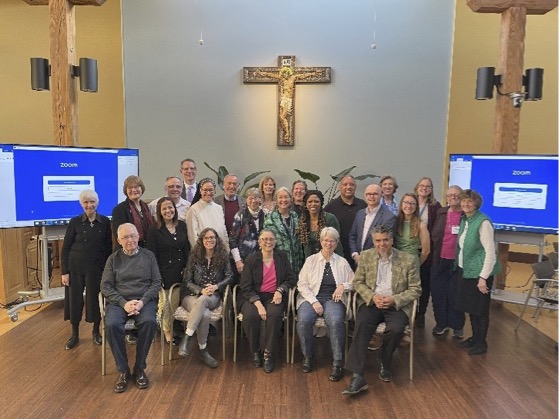13 May 2022
Sacred Spaces
Podcast: Play in new window | Download
In his best-selling book The God Delusion, Richard Dawkins heckles the Catholic Church for what he sees as its ‘recurrent flirtation with polytheism’, manifest in its variety of saints, angels and titles of Our Lady. Dawkins jeers at Pope Saint John Paul II for his ‘special affinity with the Virgin Mary’ and especially towards Our Lady of Fatima, whose feast it is today.
Dawkins interprets the different epithets, apparitions and images of Our Lady as a case of spiritualised multiple personality disorder, amnesia or religious polytheism – if you don’t like Our Lady of Lourdes, try Our Lady of Walsingham instead, and if she’s busy, I’m sure Our Lady of the Rosary will help you. This jibe misses the heart of the matter, which is the genius and love of a parent attuning themselves to their child. As the Child Development Institute in California, explains it:
Attunement is our ability to be aware of and respond to our child’s needs. It is deeply connected to emotional attachment. Some children may have a very different temperament than that of a parent, or may not communicate affection in the same way, which can interfere with the quality of their emotional relationship. Parents can use a variety of techniques to increase their level of attunement.
The different epithets, apparitions and images of Our Lady take us right to the heart of Mary our mother, whose different guises allow each of her children – so beautifully varied in temperament and culture – to experience emotional attachment to her maternal heart. Through Mary, we can come to understand Jesus’ words in today’s Gospel. Jesus tells us in verse two that ‘In my Father’s house there are many mansions’. The Greek root given for the word ‘mansions’ is perhaps better translated as ‘dwellings’ or ‘abiding place’. There is a twofold meaning of this dwelling place – God’s place for us in Heaven and His place in us and amongst us here on earth.
Mary is the person who most fully realises the fulfilment of each of these two realities Christ promises us. Our Lady was the first dwelling place, the first tabernacle for Christ. Through her, the image of the invisible God was made visible through the incarnation of Christ. Through her, we are reminded that God is present, available and attuned to the diversity of all of His children throughout the world. For example, we can have images of Christ and Our Lady which look Northern European, or East African or Indian; God’s word can be translated into any human language, and the Church can celebrate the liturgy in the form of different rites, including local customs and feasts as appropriate to the place. God’s love is universal and magnanimous; it is not confined by our human limitations. God has many mansions, He dwells wherever faith and love are made manifest. This is a wonderful expression of how God’s universality is attuned to our particularity.
God always honours our unique particularity and as we know through Christ, He also makes His universal love incarnate. Christ commands us to agape – universal love. This is not abstract, theoretical assent or wishy-washy wishful thinking. All love, including agape love requires embodiment in particular relationships to express itself. This is why God dwells in specific places amongst us here on earth. For example, the Real Presence of Christ in the Blessed Sacrament makes holy a particular church or locality, or Marian apparitions such as Fatima, Lourdes or Knock have led to the establishment of shrines which bestow many graces to pilgrims. The incarnational and enculturated presence of Christ and Our Lady helps us to attach, which is the foundation of our ability to trust and ultimately, to have faith. This is important because Jesus’s words in this Gospel passage were meant as words of reassurance that although Christ would not walk the earth in the same way again, He would not be absent. This is why our Marian shrines, like Fatima, are dear to us. They are special maternal dwellings, many mansions, holy sanctuaries, just like the womb of Mary was for Jesus.
By testifying to these realities, we are assured of the universality of God, of the spaciousness of the place He has prepared for us on earth as in Heaven. This is also why we can have many titles and images for Christ and Our Lady without being guilty of polytheism and why we can have many ‘dwelling places’ upon earth, because ultimately, home is not one fixed physical place for us as Christians, but a Person and a spiritual reality.
When Jesus says that ‘I go and prepare a place for you’, he was not just giving us an other-worldly promise. It is true that this is also a promise of Heaven, but we tend to contemplate Heaven as a physical place in another dimension. But Heaven is union with God, and communion with others, in perfect love. Heaven is therefore distinctive by its web of relationships. Where two or three are gathered, there Christ dwells amongst them. Jesus was also referring to his continuing spiritual presence with us on earth, which is found wherever the members of His Body, the Church, are gathered together as brothers and sisters, united in his love.
This loving communion is ultimately the overflow of the Divine love which is experienced within ourselves. God’s dwelling is made within us. The Carmelite nun St Elizabeth of the Trinity made the indwelling of the Trinity the focus of her whole contemplative life, so awesome and deep is the mystery. Whenever we go into the inner room of our soul and pray to our Father, we are home, we are abiding in Him and He in us, because it is the place where our heart meets His heart. And we can do this anywhere, anytime.
Another Carmelite nun, St Teresa of Avila, in her classic work Interior Castle, says that ‘I thought of the soul as resembling a castle…and containing many rooms, just as in Heaven there are many mansions’ (Interior Castle). St Teresa uses this image of the castle to describe God’s abiding presence in the inner sanctuary of our souls.
In this Eastertide season, let us wait with special attention and confidence to commemorate the day of Pentecost, when the disciples were made into temples of the Holy Spirit for the first time. As on the day of Pentecost, may our dwellings interior and exterior be made into sacred spaces which are a foretaste of the gathering of all God’s people in Heaven and may they be a blessing to their visitors and inhabitants.
Jesus sasid: “‘Do not let your hearts be troubled. Believe in God, believe also in me. In my Father’s house there are many dwelling-places. If it were not so, would I have told you that I go to prepare a place for you? And if I go and prepare a place for you, I will come again and will take you to myself, so that where I am, there you may be also. And you know the way to the place where I am going.’ Thomas said to him, ‘Lord, we do not know where you are going. How can we know the way?’ Jesus said to him, ‘I am the way, and the truth, and the life. No one comes to the Father except through me.”
Scripture passage from the New Revised Standard Version Bible: Catholic Edition, copyright 1989, 1993, Division of Christian Education of the National Council of the Churches of Christ in the United States of America. Used by permission. All rights reserved.



13 May 2022 @ 8:13 am
Thankyou Rose. So insightful, refreshing and loved the way you wove the varying cultures and our childlike personalities into sacred dwelling spaces where all can find an at home place to rest and commune with their God.
14 May 2022 @ 12:41 am
Thank you for sharing the insights and faith of your spirituality…also for providing your commentary in text.
14 May 2022 @ 6:11 am
Thank you so much Sr Rose 🌹